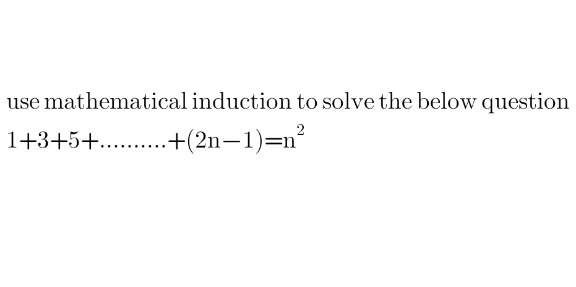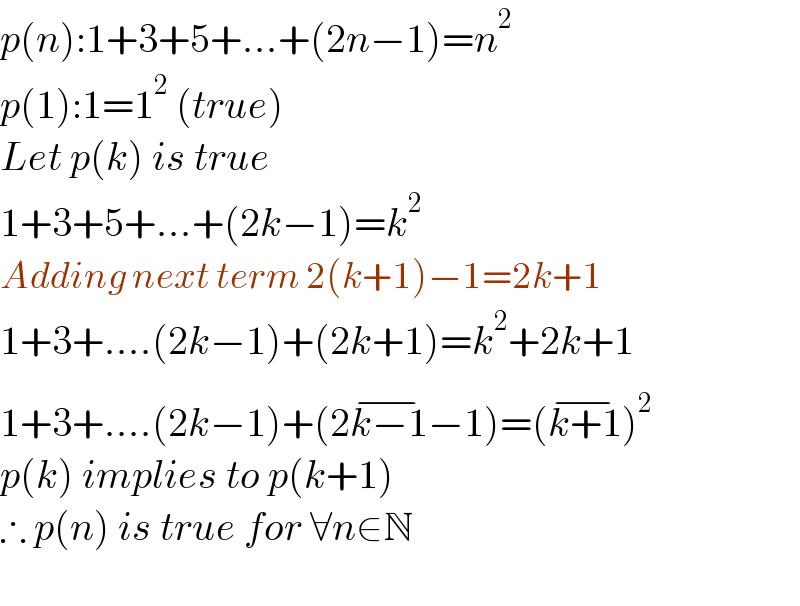Question Number 182435 by akolade last updated on 09/Dec/22

Answered by Rasheed.Sindhi last updated on 09/Dec/22

$${p}\left({n}\right):\mathrm{1}+\mathrm{3}+\mathrm{5}+…+\left(\mathrm{2}{n}−\mathrm{1}\right)={n}^{\mathrm{2}} \\ $$$${p}\left(\mathrm{1}\right):\mathrm{1}=\mathrm{1}^{\mathrm{2}} \:\left({true}\right) \\ $$$${Let}\:{p}\left({k}\right)\:{is}\:{true} \\ $$$$\mathrm{1}+\mathrm{3}+\mathrm{5}+…+\left(\mathrm{2}{k}−\mathrm{1}\right)={k}^{\mathrm{2}} \\ $$$${Adding}\:{next}\:{term}\:\mathrm{2}\left({k}+\mathrm{1}\right)−\mathrm{1}=\mathrm{2}{k}+\mathrm{1} \\ $$$$\mathrm{1}+\mathrm{3}+….\left(\mathrm{2}{k}−\mathrm{1}\right)+\left(\mathrm{2}{k}+\mathrm{1}\right)={k}^{\mathrm{2}} +\mathrm{2}{k}+\mathrm{1} \\ $$$$\mathrm{1}+\mathrm{3}+….\left(\mathrm{2}{k}−\mathrm{1}\right)+\left(\mathrm{2}\overline {{k}−\mathrm{1}}−\mathrm{1}\right)=\left(\overline {{k}+\mathrm{1}}\right)^{\mathrm{2}} \\ $$$${p}\left({k}\right)\:{implies}\:{to}\:{p}\left({k}+\mathrm{1}\right) \\ $$$$\therefore\:{p}\left({n}\right)\:{is}\:{true}\:{for}\:\forall{n}\in\mathbb{N} \\ $$$$ \\ $$
